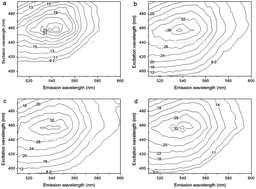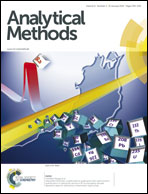Determination of the adulterants in adulterant–brandy blends using fluorescence spectroscopy and multivariate methods
Abstract
The addition of water or ethanol to brandy is an easy way to adulterate brandy. To avoid the misleading of consumers, it is necessary to develop a reliable method to detect the adulteration of brandy. In this work excitation–emission matrix fluorescence in combination with parallel factor analysis (PARAFAC) and partial least squares (PLS) regression was used to determine the content of water, ethanol and methanol in adulterated brandy samples. Excitation–emission matrix fluorescence spectra were measured in the emission wavelength range of 510–600 nm and in the excitation wavelength range of 393–497 nm. The model created using PARAFAC-PLS was able to predict the water, ethanol and methanol level in adulterated brandy with root mean square error of prediction values of 0.24%, 0.20% and 0.22%,respectively, and coefficients of determination of prediction between the reference content and the predicted values of 0.993, 0.997 and 0.995, respectively.


 Please wait while we load your content...
Please wait while we load your content...